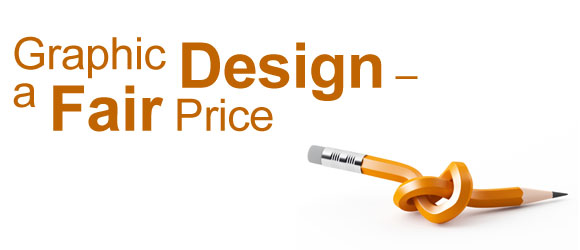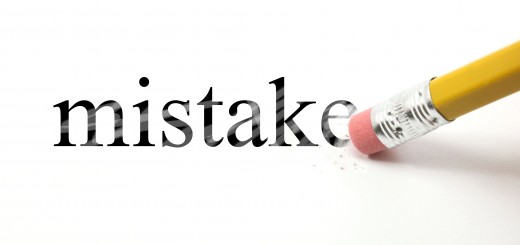Graphic Design – A Fair Price
6
Many graphic designers ask me, “How much should I charge for my services?”. Sorry to disappoint those looking for a quick answer but you aren’t going to find that in this article. Instead we are going to look at what the fair price is and why charging under or over isn’t a good idea.
We also need to look at the advantages and disadvantages of being paid by the hour or a fixed fee.
Why is charging too high or low a bad idea?
Charging too high should be an obvious one… Your potential clients might choose to go with someone else; charging too low however is a trap that many designers fall into. When you charge too low, most clients will associate your price with the quality of your work; to put it simply, low. This problem can cost you as many jobs as charging too high.
So, we know charging too high is bad and also charging too low is the same, the question we now have to ask ourselves is in that case, what should we charge?
The only person who knows your worth is yourself! Nobody else can tell you if your price is too high or low, what you think truly is the fair price is the fair price. Here are a few factors that can help you determine your own fair price.

Image by shutterstock
Experience
Experience is the critical determining factor in most cases. Experience is what makes you quick, knowledgeable (helpful in answering any client queries), and dependable. Clients know they can rely on you as you have a track record of proving just that! You have a large portfolio showing great work and can tailor your resume to suit the job at hand. The best way of putting it is, experience is key.
Before we look at more of the determining factors, I want to point out that there are always exceptions to the rule.
Creativity
Creativity is something that can’t be faked! A lot of these points can be put into the category of ‘fake it until you make it’ but not with this one. Creativity shines through every piece of work you produce and is something that clients will make note of. If you have work in your portfolio that looks very uninspired and boring, try taking it out – see if it makes an impact.
Flexibility
This is one of the most overlooked parts of being a graphics designer. When your client dumps some unexpected work on you with an unbelievably short deadline, can you adapt to meet it? A lot of graphics designers tend to struggle with balancing projects; don’t let this be you. To improve in this area, plan! This may seem counter intuitive as you can’t plan for something like this but you can plan to cope with it. Planning cuts inefficiency. The time you’ll save in planning will free up more time for yourself and should an unexpected project come along, it won’t knock you off your feet.
Breaking this down a little further, if you’re only going to be available for one hour per day and the client is going to need 10, either adapt to meet the client’s need or don’t take the job.
Software Packages
Some clients may require you to use a specific software package so they are able to make any small changes themselves or maybe a unique package suited to the project. Are you likely to have the package they need? Graphic design can be broken down into a few different sectors to which there are a common set of applications, try to use as many as you can enabling yourself to feel comfortable with them when called upon.
Payment Basis: Fixed or Hourly
Fixed Price
As we discussed earlier, working on a fixed price has its advantages and disadvantages.
If you’re fast and the quality of your work is very high, fixed price is probably for you. If you’re the sort of person that goes at a steady pace in order to produce your best work, you’re probably better suited to working by the hour.
When working on a fixed price, you’re able to charge more for your work (more per hour when broken down) but you absolutely have to be good at budgeting. Work out how long it is likely to take you then add an extra 10-20% as a cushion for any issues or delays that may arise. Another thing to be careful of is revisions, expect them! Your client isn’t likely to be completely satisfied with your first piece and will want to add some of their own twists to it. This is all time that should be accounted for in your budget. When you start getting 5+ revisions, that’s when you’re budget isn’t going to save you. Sometimes clients can be a little awkward but remember, they’ve paid you for a certain piece and you’re expected to deliver. Excessive revisions are the biggest drawback of a fixed price job!

Image by shutterstock
Hourly
Working by the hour is comfortable. For those a little slower and those who prefer the safety of it, it can be far more easing when you know that every second of work you put in will be paid for. Revisions aren’t going to leave you losing out and unexpected problems won’t knock you back. It’s a far steadier pace and for a beginner, definitely the most enjoyable.
Which is best for me?
If you’re a beginner, go for the hourly option. Building up experience will allow you to calculate fixed price budgets far more accurately than starting on fixed price jobs immediately which will save you a lot of stress in the long run. It can take a few projects before you find your feet so to ensure you’re getting the most out of it, go for the steady hourly rate.
Conclusion
In this article we’ve tried to sum up the elements involved in determining a fair price. Test them out and let us know what you think.
Hopefully beginners now have an idea of where to start and more experienced designers will have found some value here too.





I couldn’t DISAGREE more. Fixed prices are the way to go. Notice in the article that pros and cons of fixed prices were put down… but no real cons for hourly rates? Why no “cons” unless the author is predisposed to hourly rates?
Fixed prices are better because they provide a professional appearance. A professional will alway quote a fixed fee. An amateur (meaning untried and potentially untrustworthy) will charge hourly fees.
Fixed prices also give clients reassurance of the price where hourly rates leave them guessing. Is it good to leave clients guessing on the price of our services? I don’t think so.
Fixed prices are a little tougher to calculate, like the author said. But even the amateur will get used to this in short order. Fixed prices are always more profitable in the long run.
To recap, fixed prices offer professionalism, trust, reassurance, and profit. Hourly rates express distrust, inexperience, and never knowing what a job will cost. So which do you want to express to your client?
One last bonus of fixed price agreements- annuities. Fixed price agreements can be set up as anunuities to help regulate your income and cashflow while making the project affordable by allowing monthly installments. Hourly rates play havoc on your cash flow and that of your client.
Thanks alot for your follow up with these great ideas 😉
Cool. I want to know more about this XML and flash.. Thanks for posting.
Awesome! I’ll bookmarked this for future use. Thanks for sharing.
Great, make sure not to miss the next part of this series. It is all about Flash and XML 😉
Hi all. I just couldn’t stop myself from commenting for this blog. The article is really impressive. I personally like the writer’s opinion. I found the information complete and convincing. Keep up the spirits.